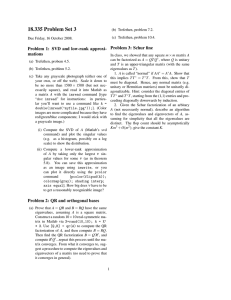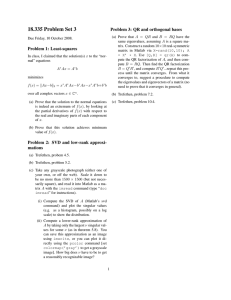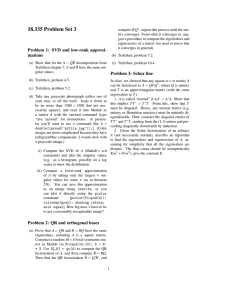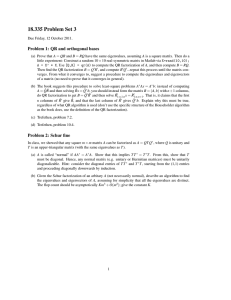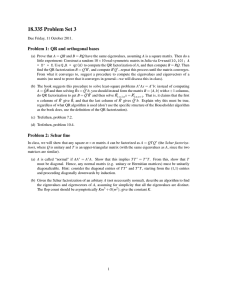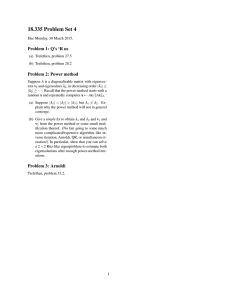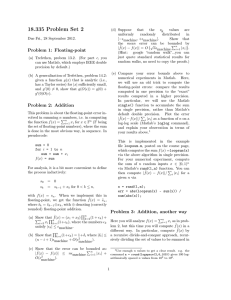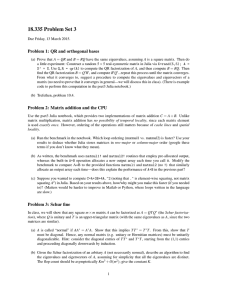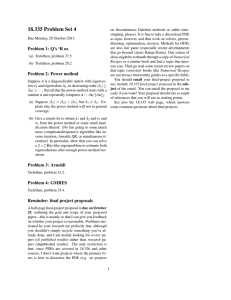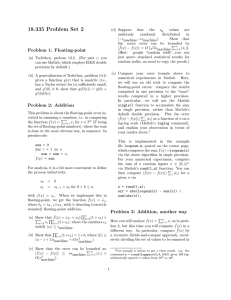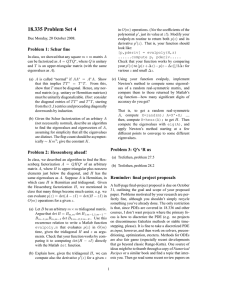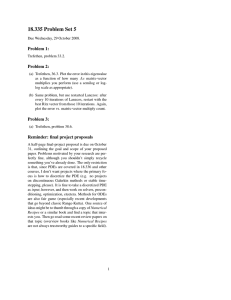18.335 Problem Set 3
advertisement
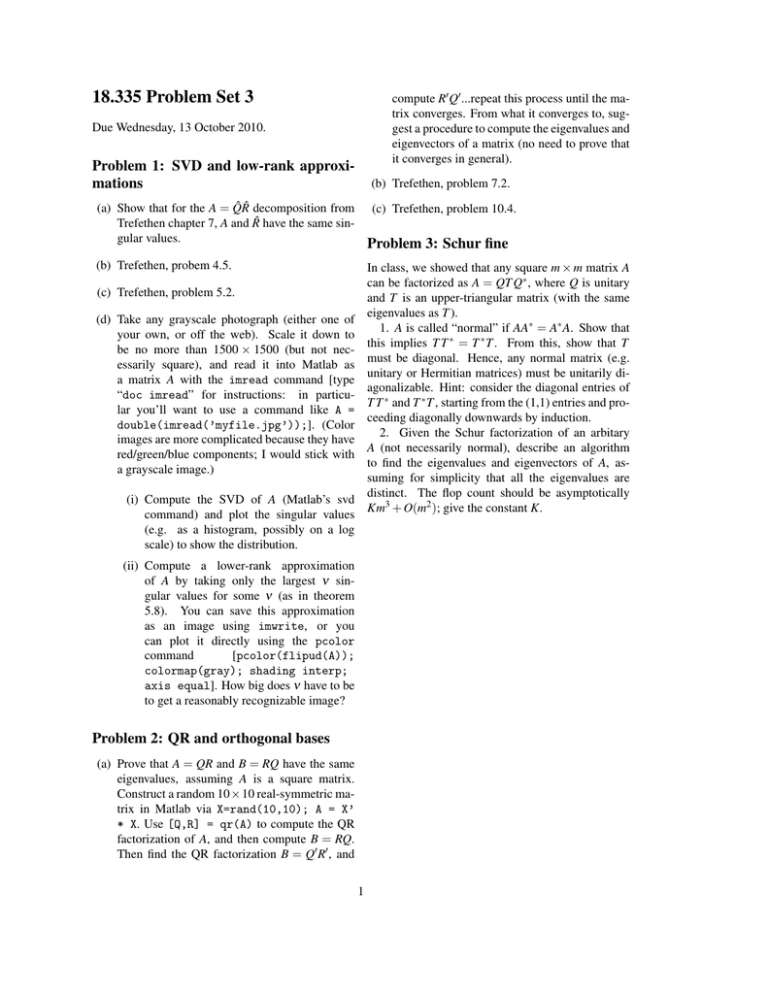
18.335 Problem Set 3 compute R0 Q0 ...repeat this process until the matrix converges. From what it converges to, suggest a procedure to compute the eigenvalues and eigenvectors of a matrix (no need to prove that it converges in general). Due Wednesday, 13 October 2010. Problem 1: SVD and low-rank approximations (b) Trefethen, problem 7.2. (a) Show that for the A = Q̂R̂ decomposition from Trefethen chapter 7, A and R̂ have the same singular values. (c) Trefethen, problem 10.4. Problem 3: Schur fine (b) Trefethen, probem 4.5. In class, we showed that any square m × m matrix A can be factorized as A = QT Q∗ , where Q is unitary and T is an upper-triangular matrix (with the same eigenvalues as T ). 1. A is called “normal” if AA∗ = A∗ A. Show that this implies T T ∗ = T ∗ T . From this, show that T must be diagonal. Hence, any normal matrix (e.g. unitary or Hermitian matrices) must be unitarily diagonalizable. Hint: consider the diagonal entries of T T ∗ and T ∗ T , starting from the (1,1) entries and proceeding diagonally downwards by induction. 2. Given the Schur factorization of an arbitary A (not necessarily normal), describe an algorithm to find the eigenvalues and eigenvectors of A, assuming for simplicity that all the eigenvalues are distinct. The flop count should be asymptotically Km3 + O(m2 ); give the constant K. (c) Trefethen, problem 5.2. (d) Take any grayscale photograph (either one of your own, or off the web). Scale it down to be no more than 1500 × 1500 (but not necessarily square), and read it into Matlab as a matrix A with the imread command [type “doc imread” for instructions: in particular you’ll want to use a command like A = double(imread(’myfile.jpg’));]. (Color images are more complicated because they have red/green/blue components; I would stick with a grayscale image.) (i) Compute the SVD of A (Matlab’s svd command) and plot the singular values (e.g. as a histogram, possibly on a log scale) to show the distribution. (ii) Compute a lower-rank approximation of A by taking only the largest ν singular values for some ν (as in theorem 5.8). You can save this approximation as an image using imwrite, or you can plot it directly using the pcolor command [pcolor(flipud(A)); colormap(gray); shading interp; axis equal]. How big does ν have to be to get a reasonably recognizable image? Problem 2: QR and orthogonal bases (a) Prove that A = QR and B = RQ have the same eigenvalues, assuming A is a square matrix. Construct a random 10×10 real-symmetric matrix in Matlab via X=rand(10,10); A = X’ * X. Use [Q,R] = qr(A) to compute the QR factorization of A, and then compute B = RQ. Then find the QR factorization B = Q0 R0 , and 1
